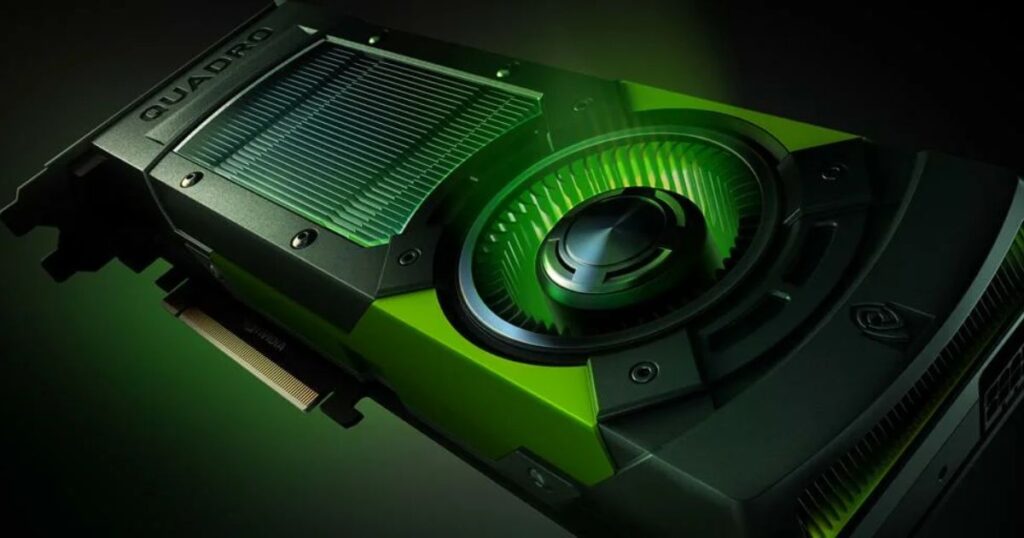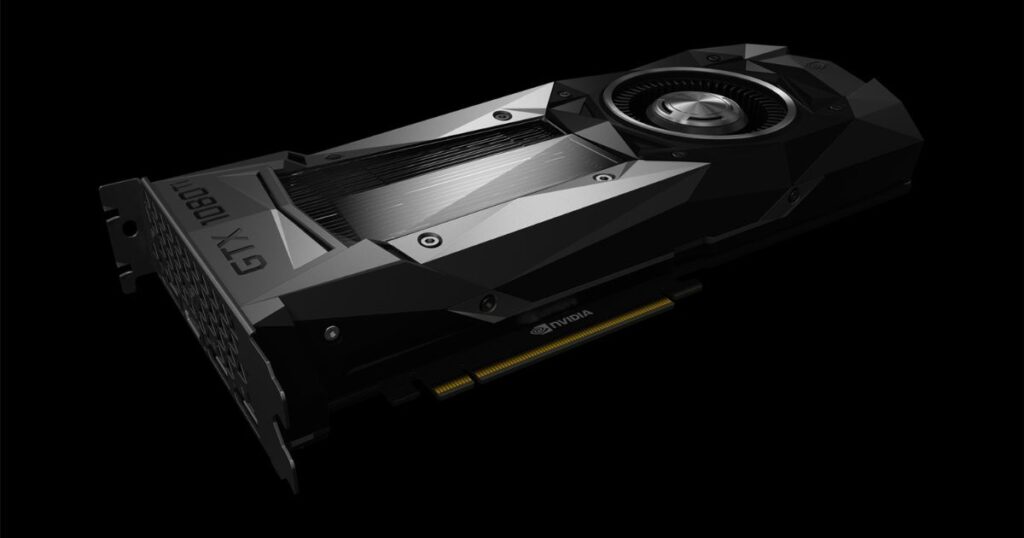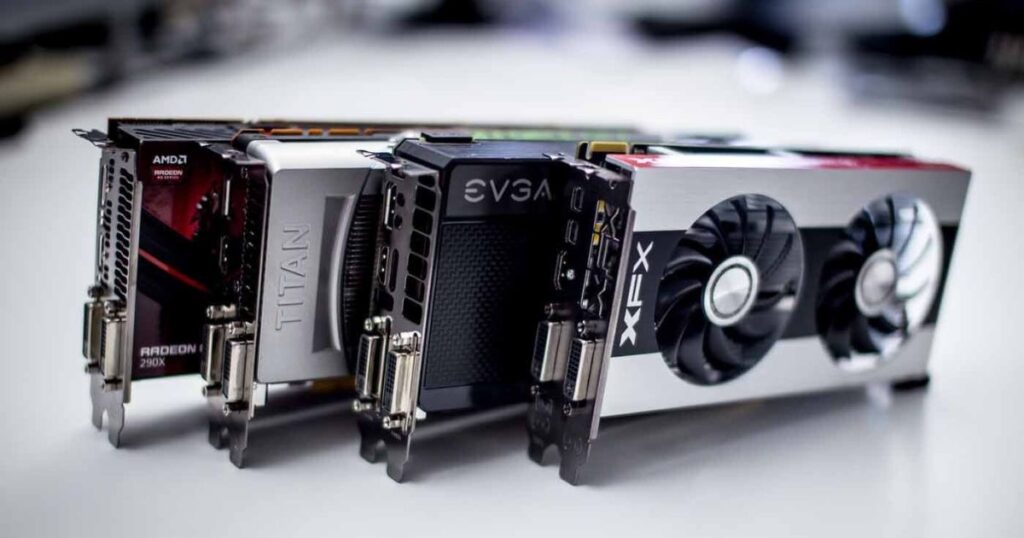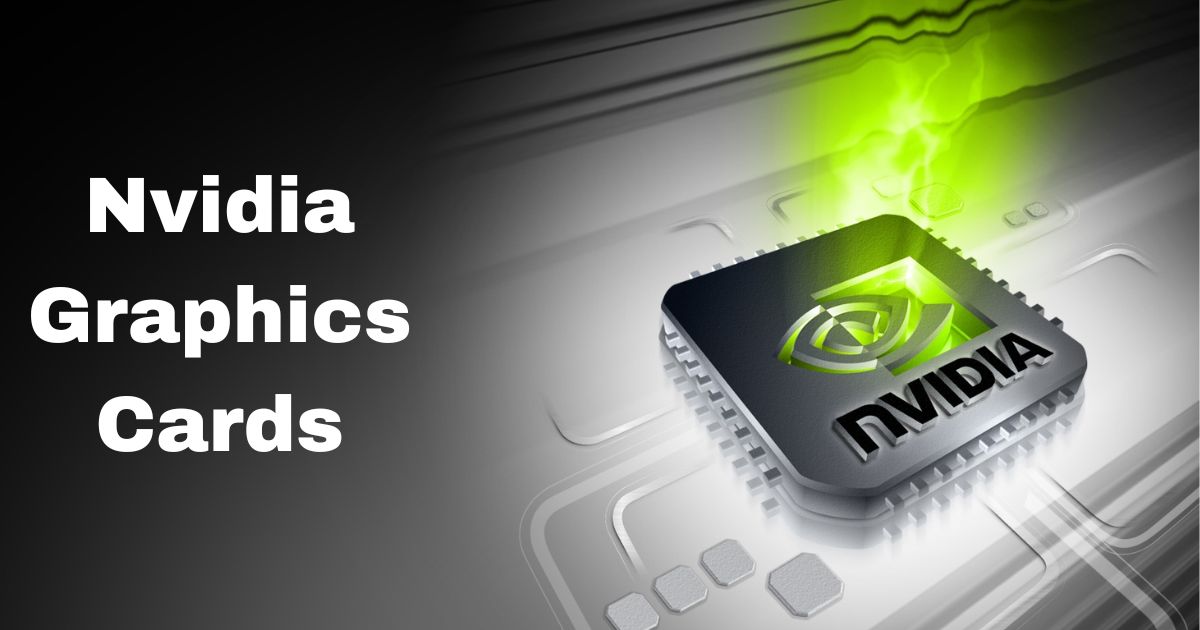For gamers, creative professionals, and GPU computing enthusiasts, Nvidia’s wide range of graphics cards delivers the horsepower needed to drive brilliant experiences. But with so many options across a broad pricing spectrum, picking the right Nvidia GPU for your needs requires careful evaluation. This comprehensive 2000-word guide will walk you through everything you need to know to choose the best Nvidia graphics card for your budget and use case.
Ranking Nvidia’s Lineup from Fastest to Slowest

When it comes to ranking the overall performance of Nvidia GPUs, these are the graphics cards available today ordered from fastest to slowest based on leading benchmarks:
- Nvidia RTX 4090
- Nvidia RTX 4080
- Nvidia RTX 3090 Ti
- Nvidia RTX 4070 Ti
- Nvidia RTX 4070 SUPER
- Nvidia RTX 3090
- Nvidia RTX 3080 Ti
- Nvidia RTX 4070
- Nvidia RTX 3080
- Nvidia Quadro RTX A6000
Table 1: Nvidia GPUs Ranked by Performance
| Graphics Card | Render Score | Gaming Score | Performance Total |
| Nvidia RTX 4090 | 1271 | 370 | 1640 |
| Nvidia RTX 4080 | 952 | 290 | 1242 |
| Nvidia RTX 3090 Ti | 675 | 278 | 953 |
| Nvidia RTX 4070 Ti | 706 | 240 | 946 |
| Nvidia RTX 4070 SUPER | 704 | 225 | 929 |
| Nvidia RTX 3090 | 652 | 260 | 912 |
| Nvidia RTX 3080 Ti | 642 | 232 | 874 |
| Nvidia RTX 4070 | 646 | 190 | 836 |
| Nvidia RTX 3080 | 554 | 238 | 792 |
| Nvidia Quadro RTX A6000 | 540 | 207 | 747 |
As you can see, the latest generation RTX 4000 series currently occupies Nvidia’s performance crown, with the mighty RTX 4090 leading the pack by a significant margin. The 4090 utilizes Nvidia’s new Ada Lovelace architecture which delivers up to 2x the performance efficiency of the previous Ampere generation.
With its 76 billion transistors fabricated on TSMC’s 4N process, the 4090 pumps out 97 TFLOPs of power from 16,384 CUDA cores operating at boost speeds over 2.5 GHz. It’s a GPU processing juggernaut, demolishing gaming frame rates at 4K and blazing through rendering and computing workflows faster than any other graphics card on the market. Just be prepared to pay a hefty price of $1599 for this elite level of graphics horsepower.
But previous generation 3000 series GPUs like the RTX 3080 Ti and 3090 still deliver formidable performance in their own right. Built on Samsung’s 8N process, these Ampere-based cards lack some of the 4090’s refinements but benefit from more mature drivers and broader game optimization.
With 10,000+ CUDA cores and temps around 2 GHz, the 3090 Ti and 3090 can easily power immersive 4K experiences in the latest games while providing creators plenty of rendering and compute muscle.
For most users, the best blend of price and performance is offered by Nvidia’s new RTX 4080 and refreshed RTX 3080 12GB. These enthusiast’s class cards slot in right below the ultra-tier offerings, yet still pump out triple-digit frame rates in popular titles at max settings.
Their $1100-1200 retail pricing is much easier to stomach for many versus the 4090’s sky-high cost. Those wanting great 1440p performance can look at the even more affordable RTX 4070 Ti and RTX 3070 Ti in the $700-800 range.
On the lower end, budget-focused gamers have accessible options like the evergreen GTX 1660 Super and GTX 1650 that deliver playable framerates in esports titles for under $250. And Nvidia’s latest entry-level offerings – the RTX 3050 and RTX 4060 – bring new levels of performance to sub-$300 cards, even including ray tracing support.
Best Bang for Your Buck at Key Price Points

Gamers and creators looking to maximize value have great options across three key budget ranges:
Best Under $200 – GTX 1650
The GTX 1650 packs impressive 1080p gaming prowess into a remarkably low 75W power envelope. It utilizes Nvidia’s Turing architecture with 896 CUDA cores and 4GB of GDDR5 memory clocked at 8Gbps, delivering smooth 60 fps gameplay in popular online titles like Valorant, Rocket League and Apex Legends. The 1650’s compact size also makes it perfect for small form factor builds. At just $150-170, it’s a terrific choice for budget gamers.
Best Under $400 – RTX 3060 Ti
Representing a massive generational leap over the GTX 1060, the RTX 3060 Ti brings Ampere’s performance and feature set to the mid-range market at an attractive price. It equips 8GB of fast 14 Gbps GDDR6 memory across a 256-bit bus, with 4,864 CUDA cores that boost up to 1.67 GHz.
This combo enables 100+ fps gaming in AAA titles at max settings in 1440p. DLSS and ray tracing support also help enhance image quality and frame rates in supported titles. Priced around $370, the 3060 Ti is one of the best-value GPU options out there.
Best Under $600 – RTX 4070
This newly released graphics card wields Nvidia’s advanced Ada Lovelace architecture to deliver frame rates well over 100 fps in popular games at 1440p. It achieves this via a combination of 5,888 CUDA cores clocked up to 2.6 GHz and 12GB of 21 Gbps GDDR6X video memory on a wide 192-bit interface.
These cutting-edge specs provide similar performance to the mighty 3090 Ti for hundreds less. If you want an affordable GPU that can push high refresh rate 1440p monitors to their limit across a broad range of demanding games, the $599 4070 is an incredible value.
Key Specs and Features to Compare

When evaluating Nvidia GPUs, these are the most important factors to consider:
VRAM – The amount of video memory determines the resolution and texture quality you can use in games. 4-6GB is sufficient for 1080p gaming, while 8-12GB allows you to maximize settings at 1440p and 4K. Productivity apps like video editing can be utilized even more. Higher detail assets in modern games are starting to need 10GB or more at 4K.
CUDA Cores – These dedicated shader processors run calculations for rendering graphics. More CUDA cores equal higher performance. Top-end GPUs today have over 10,000 cores, while entry models still offer over 1,000. Compare core counts combined with boost clocks to gauge relative power.
Clock Speeds – The base and boost clock rates measure the GPU’s processing speed in MHz. Faster clocks boost frame rates, so compare both base and max boost across cards. High-end models boost over 2 GHz nowadays.
Memory Speed – Faster memory improves card bandwidth, which helps feed the GPU cores. GDDR6 at 14-18 Gbps is the standard for new cards, versus 10-12 Gbps on last gen GDDR5/GDDR6 models.
RTX vs. GTX – RTX cards have dedicated ray tracing and AI Tensor cores that GTX models lack, enabling enhanced lighting, shadows, and performance in supported games with these advanced graphics techniques. DLSS AI upscaling is also exclusive to RTX cards.
Bus Width – Wider memory interfaces like 384-bit improve overall card bandwidth, allowing the GPU to process more data. Many new GPUs utilize more efficient memory that doesn’t need ultra-wide interfaces.
TDP – The thermal design power rating measures how much heat and power a GPU produces when active. Higher TDP cards like 300W+ require more cooling and a more capable PSU.
Dimensions – Larger and wider GPUs won’t fit in all computer cases. Check clearance measurements if building a compact system. Most new high-end cards are quite sizable.
Top Nvidia GPUs for Creative Workflows

For 3D rendering, video production, and other GPU computing tasks, Nvidia’s highest-performing offerings are ideal:
RTX 4090 – The undisputed performance king. With 24GB of G6X memory and 83 teraflops of power, the RTX 4090 speeds through the most demanding creative workloads. Its 76 billion transistors and 16,384 CUDA cores operating at over 2.5 GHz chew through rendering tasks better than dual previous-gen cards. If your workflow timeline is your priority, this is the ultimate Nvidia GPU.
Dual RTX 3090s – Leveraging NVLink or SLI, two RTX 3090s working in parallel provide excellent rendering horsepower for less total cost compared to a single RTX 4090. With 24GB of VRAM each, you can build scenes of incredible complexity while taking advantage of the combined 36TFLOPs of power. Make sure your workstation motherboard and PSU can support dual 375W cards, however.
RTX A6000 – Nvidia’s flagship data center and workstation accelerator packs 48GB of ECC memory paired with the full Ampere GA102 GPU. Though expensive at $5000, its sheer VRAM capacity and validated enterprise drivers make it popular for niche professional visualization use cases. However, it lacks the raw throughput of consumer gaming models.
Quadro RTX 6000 – Traditionally Nvidia’s most capable pro-grade GPU for content creation, the Quadro RTX 6000 wields 24GB of GDDR6 and 4,608 CUDA cores for excellent rendering performance. Plus, it provides optimized drivers and enterprise-level support. Though at $5000, today’s consumer cards deliver more value.
Finding the Right Card for Your Build

When selecting a graphics card, you want to make sure your PC can fully support it. Here are some key considerations:
Power Requirements – Higher-performing GPUs require more electrical power. An RTX 3090 needs 850W, while a 3060 Ti only needs 550W. High-end cards today can draw 300W or more under full load. Make sure your power supply has enough headroom to avoid stability issues or throttling.
Motherboard Compatibility – Your motherboard must have a PCIe slot that matches your card’s connection. Most modern boards have PCIe 3.0 or 4.0 x16 slots, which is universal across new GPUs. Some extremely compact boards only offer x8 or x4 slots that could bottleneck flagship cards.
CPU Pairing – A faster CPU with more cores prevents bottlenecking in gaming and production. An AMD Ryzen 7 5800X or Intel Core i7-12700K pairs well with high-end Nvidia cards. Even budget GPUs benefit from at least a modern quad-core though.
Physical Card Size – Larger coolers and triple fan designs take up more space. Make sure your case can fit the GPU’s length and clearance requirements. High-end GPUs often exceed 10 inches, so compact cases can’t always accommodate them.
Cooling and Airflow – Today’s powerful GPUs produce lots of heat. Ensure your case has adequate fans and ventilation overall. Blower-style cards that exhaust heat out the back are ideal for cramped cases, while open-air coolers need room to breathe.
Monitor Connections – Make sure your graphics card has the right outputs to connect your display(s). Most GPUs offer a mix of HDMI, DisplayPort, and DVI. Ultra high-end monitors may require multiple DisplayPort connections to achieve peak refresh rates.
CPU Architecture – AMD Ryzen and Intel 12th Gen Alder Lake CPUs require PCIe 4.0 compatible GPUs to achieve full bandwidth. This isn’t critical, but can provide a few percentage points of performance lift over PCIE 3.0.
Overclocking for Extra Performance

Getting the most out of your Nvidia graphics card may require some old-fashioned overclocking. Here are some tips:
- Overclocking works by increasing clocks, power limits, and voltages beyond stock specs via tuning software like EVGA Precision or MSI Afterburner. This extracts more performance at the cost of increased heat and power draw.
- GPU Boost technology means most cards already run close to their limit out of the box. But you can usually achieve a modest 5-10% OC through tuning.
- Aftermarket cards with beefier power stages, VRMs, and coolers overclock better. A founders edition or compact card will hit limits quicker.
- Start with tweaking the power and temp limits, then increase the core clock in small increments of 25-50 MHz at a time testing stability. Memory can also be OC’ed.
- Run benchmarks like 3DMark to test performance and FurMark to stress test temperatures/stability. Most GPUs can’t exceed 2.1 GHz safely.
- GPU overclocking requires accepting the risks of decreased component lifespan and stability. But moderate tuning is relatively safe if cooled properly.
Frequently Asked Questions
Is RTX faster than GTX?
Yes. RTX cards are consistently 15-25% faster than their GTX counterparts thanks to architectural improvements that enhance performance in games and applications. They also add specialized ray tracing and AI Tensor cores not found in GTX models.
How do I choose a graphics card?
Consider the display resolution, game settings, and applications you want to run, then find the card with benchmarks matching those performance needs. Also, factor in your budget, PC’s power supply wattage, and case size restrictions. Requirements like ray tracing support or video memory may also help narrow options.
Should I get Nvidia or AMD?
Both Nvidia and AMD make excellent GPUs. Nvidia traditionally leads at the ultra-high high-end and offers useful creator features like CUDA acceleration. But AMD offers better value at mid-range pricing. Weigh factors like budget, performance needs, and software ecosystem and monitor connectivity to decide.
Will my CPU bottleneck performance?
If your processor is older or has fewer cores, it may limit achievable frame rates versus the GPU’s capabilities alone. Upgrading to at least a modern 6-core processor prevents leaving performance on the table. At 1440p and 4K, the GPU matters more.
How can I test my graphics card?
Run benchmarks like 3DMark TimeSpy and FireStrike to measure overall gaming performance versus other systems. Monitoring FPS using FRAPS or a tool like MSI Afterburner also checks real-world game performance. Stress testing with FurMark confirms stability and temperatures under heavy loads.
What size power supply do I need?
Higher-end cards generally need 650W+ units from reputable brands like Corsair, EVGA, or Seasonic. Lower-power cards can work with 500W supplies. Always leave at least 50W of extra headroom over the GPU’s TDP rating. Having extra power overhead is useful if you want to overclock as well.
The Right Card for You
With Nvidia’s stellar lineup of graphics cards, there’s an ideal solution for virtually any gamer, creator, and computing enthusiast. Carefully examine the performance benchmarks for cards in your budget, along with their specs, features, and platform requirements.
This ensures you can identify the best Nvidia GPU for your needs and build. Equipped with the guidance from this guide, you are now fully prepared to shop for and install an Nvidia graphics card that will deliver amazing experiences for years to come. Game on!











